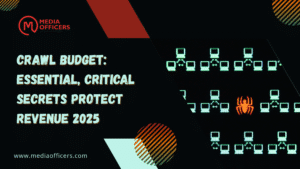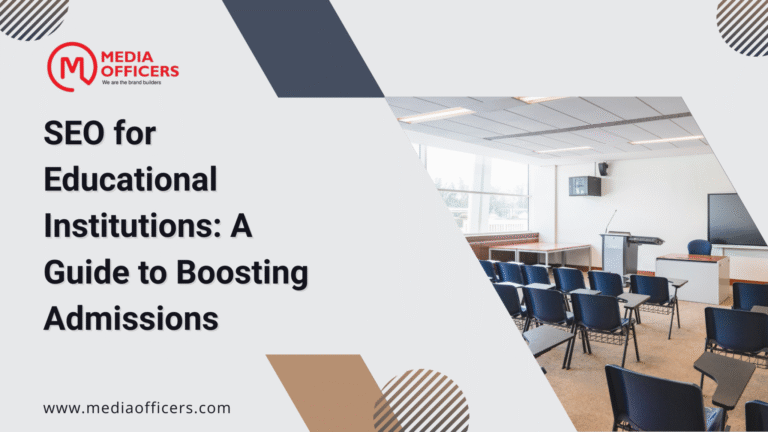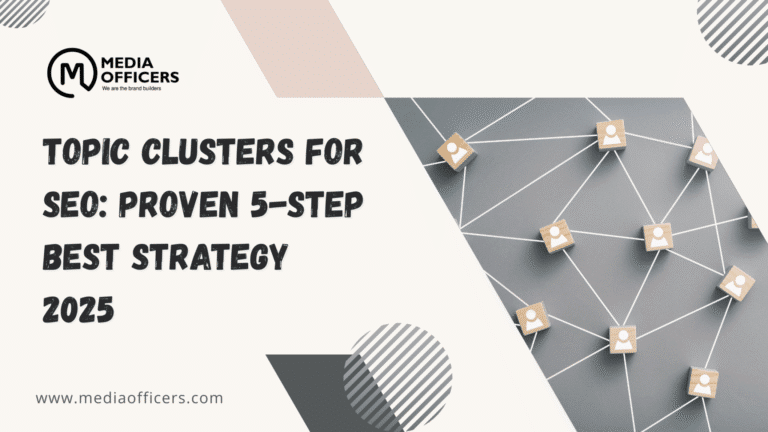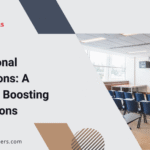The crawl budget is costing you revenue in the AI search era. As AI crawlers proliferate, the real revenue leak isn’t only about clicks it’s about pages that stay invisible to the systems that matter. If high-value pages aren’t crawled, you’re leaving money on the table every day. This article explains why the traditional metrics used to measure crawl volume can mislead executives, and how to steer your crawl budget toward revenue-generating pages using a framework built for both classic search and AI-driven discovery.
Between 2024 and 2025, AI crawler traffic surged dramatically, with GPTBot’s share rising from 5 to 30 percent. But this growth isn’t a replacement for conventional search traffic; users who start with ChatGPT still rely on Google and other engines for discovery. In practice, that means enterprise sites must satisfy both traditional crawlers and AI systems without expanding their crawl budget uncontrollably. The goal isn’t more pages crawled; it’s more revenue from the pages that actually convert.
The Dilemma: Crawl Volume vs. Revenue Impact
Many teams optimize for a metric they can easily measure: total pages crawled. Yet what actually drives revenue is which pages get crawled and indexed in ways that translate into visibility and conversions. When Cloudflare analyzed AI crawler behavior, an alarming pattern emerged: for every Anthropic Claude referral, ClaudeBot crawled tens of thousands of pages. The result is a lopsided crawl-to-referral ratio massive content consumption with little direct return. The implication is clear: the crawl budget is a finite resource, and misallocating it can erode revenue even as traffic grows elsewhere.
To protect revenue, you must direct crawl budget toward pages that matter most: product detail pages, price pages, authoritative comparisons, and high-conversion content. It’s not about having too many pages; it’s about enabling the right pages to be discovered first by both humans and AI-driven search systems. Balancing traditional crawl demand with AI-first discovery is the new normal for enterprise sites.
The PAVE Framework: Prioritizing for Revenue
Semrush Enterprise proposes the PAVE framework to determine whether a page deserves crawl budget in the dual-world of traditional search and AI-powered discovery. Each dimension helps you distinguish pages that are worth the risk to crawl from those that aren’t.
- P – Potential: Does a page have realistic ranking or referral potential? If a page is thin, non-converting, or lacks content depth, it’s a candidate for deprioritization. Pages with clear conversion signals, depth, and unique value should dominate crawl choices.
- A – Authority: Beyond basic signals, does the page convey credibility and trust? In the AI era, signals like E-E-A-T and domain authority help reliable content win the attention of AI bots that synthesize and answer user queries.
- V – Value: How much unique, synthesizable information does the page offer per crawl? Pages requiring heavy JavaScript rendering can slow down crawl efficiency; AI crawlers often skip JavaScript and rely on static HTML for quick indexing.
- E – Evolution: How frequently does the page update in meaningful ways? Pages that refresh with new data, reviews, or comparisons typically demand more crawl attention, while static pages see reduced crawl priority over time.
Within this framework, crawl budget becomes a strategic lever, not a cost center. For example, pages heavy on JavaScript that require rendering can dramatically reduce crawl efficiency. If a page’s Potential and Authority are weak, it should be trimmed from the crawl queue in favor of higher-value assets. The PAVE framework equips teams to allocate crawl budget where it compounds revenue the most.
Why Dynamic Signals Matter in AI-First Discovery
AI bots don’t just copy old rankings; they assess current authority signals, content depth, and the ability to synthesize information. Pages with clear product data, price points in static HTML, and well-structured specifications are more likely to be included in AI-generated answers and comparisons. This makes PAVE not only a SEO planning tool but a framework that aligns technical health with business outcomes.
Server-Side Rendering: Turning the Tide in Your Favor
One of the most consequential decisions for crawl budget efficiency is how content is rendered. JavaScript-heavy sites can incur a ninefold rendering tax on crawl budgets, particularly in environments where AI crawlers skip heavy client-side processing. Most AI crawlers don’t execute JavaScript; they fetch raw HTML and move on. In other words, CSR-leaning sites risk having their main content missed by both AI and traditional crawlers.
Server-side rendering flips this dynamic. With SSR, the server pre-builds the full HTML before sending it to clients and bots. The result is immediate content visibility with no dependency on client-side JavaScript execution. The practical payoff is tangible: crawlers access critical content on the first request, making product names, pricing, and descriptions indexable from day one. And the benefits aren’t limited to indexing speed; they extend to user experience and conversion rates.
Evidence from Deloitte’s research shows that even small improvements in mobile load time can yield meaningful uplifts in conversions and order value. A 0.1-second improvement in mobile speed led to an 8.4 percent increase in retail conversions, a 10.1 percent lift in travel conversions, and a 9.2 percent higher average order value. SSR reduces rendering overhead, delivering faster experience to users and bots alike. In large enterprise sites with millions of pages, SSR can be a decisive factor in ensuring the most valuable content is both visible and convertible across all channels.
The Disconnected Data Gap: Turning Data Into Revenue
Many organizations operate in silos when it comes to crawl and search data. Crawl logs live in one system, ranking signals in another, and AI monitoring in a third. This fragmentation makes it nearly impossible to answer the simple question: which crawl issues are costing us revenue right now? The lack of a unified data view creates a compounding risk, where decisions optimize the wrong priorities and miss revenue opportunities.
Leading teams are solving crawlability at scale by unifying crawl intelligence with search performance data. When you can segment crawl data by region, product line, or language, you can pinpoint exactly where crawl budget is being wasted and where it’s driving conversions. A unified view transforms crawl health from a technical headache into a strategic revenue lever. The upside is clear: you gain end-to-end visibility into how changes in crawl strategy correlate with visibility, traffic quality, and revenue outcomes.
In practice, this means investing in tools and processes that integrate log file data, Search Console metrics, and AI visibility indices. When teams can compare pre- and post-deployment performance, and measure crawl health against actual revenue signals, you unlock the true value of consolidate crawl intelligence.
3 Immediate Actions to Protect Revenue
Here are concrete steps you can implement now to ensure your crawl budget is working for you, not against you.
- Conduct a crawl audit using the PAVE framework. Combine Google Search Console’s Crawl Stats with log file analytics to identify URLs that disproportionately consume crawl budget. For global sites, segment data by region, language, and product line to reveal where budget is wasted. Use a scalable health-management approach, such as Site Intelligence, to maintain ongoing precision and governance. After the audit, apply the PAVE criteria to decide which pages to deprioritize or consolidate. Strengthen internal linking for high-value pages, fix depth issues, and prune indexable vs non-indexable URLs in sitemaps.
- Implement continuous monitoring, not periodic audits. Don’t wait for quarterly reviews to catch problems. Tie monitoring to deployments so that issues are detected before they drive revenue down the funnel. Historical tracking and side-by-side comparisons across environments allow you to catch subtle drift in crawl health that could cost revenue over time. A proactive approach keeps high-value pages visible and converting as you release updates.
- Systematically build your AI authority. AI search often differentiates between broad topical pages and product-specific queries. Your site must become the definitive source for your products and services. Ensure pricing and critical product details appear in static HTML, use structured data for specifications, and publish meaningful feature comparisons on your domain. This strengthens AI legitimacy and helps maintain visibility in AI-driven answers and syntheses.
Additional tactics to accelerate revenue protection include simplifying navigation to reduce crawl depth, updating new URL structures to preserve link equity, and ensuring that critical PDPs and pricing pages are consistently accessible without relying on JavaScript rendering. The goal is to have high-value pages appear in the right places for both human users and AI bots with minimal friction.
Visibility Is Profitability: The Roadmap for Enterprise Sites
Your crawl budget problem is essentially a revenue recognition problem. High-value pages that remain unseen translate into missed conversions, lower average order value, and an ever-widening gap between potential and actual revenue. With AI-driven search on the rise and billions of daily queries, the stakes have never been higher. The winners won’t be those who have the most pages; they’ll be those who optimize site health so bots reach the highest-value pages first.
For enterprises managing millions of pages and multiple regions, the real opportunity lies in unified crawl intelligence. By integrating deep crawl data with search performance metrics, you create a complete picture of how changes in crawl strategy affect visibility and revenue. This approach shifts crawl management from a technical challenge to a strategic revenue protection program. If you want to learn more, explore how Site Intelligence by Semrush Enterprise can help unify crawl and performance data to protect and grow revenue.
Frequently Asked Questions
What is a crawl budget and why does it matter for revenue?
A crawl budget is the amount of resources a search engine allocates to crawling a site in a given period. It matters for revenue because only pages that are crawled and indexed can appear in search results or AI-generated answers. If high-value pages aren’t crawled, they can’t contribute to conversions, thereby reducing revenue potential even as traffic elsewhere grows.
How does SSR impact crawlability and revenue?
Server-side rendering pre-builds HTML on the server, making content immediately accessible to crawlers and users without waiting for client-side JavaScript. This improves crawl efficiency and indexability, speeds up page loads, and can boost experiment-driven conversions. In practice, SSR can dramatically increase visibility of product information and pricing, driving revenue without increasing overall crawl volume.
What is the PAVE framework and how is it used?
The PAVE framework helps prioritize pages for crawl budget allocation using four dimensions: Potential, Authority, Value, and Evolution. By evaluating each page against these criteria, teams identify which pages deserve crawl budget and which should be deprioritized or consolidated, maximizing revenue outcomes from each crawl decision.
How can I unify crawl data with performance metrics?
Use integrated analytics platforms that bring together crawl logs, site performance data, and AI visibility signals. Segment data by regions and product lines, compare pre- and post-deployment performance, and correlate crawl health with conversions and revenue. A unified view reduces blind spots and turns crawl management into a strategic lever for growth.
Conclusion
The AI search era doesn’t render crawl budgets obsolete; it makes them more valuable and more complex. The pages that convert and the content that informs buying decisions will be the ones that receive priority in crawl queue management. By adopting the PAVE framework, embracing SSR for faster, more accessible content, and unifying data across crawl and performance streams, enterprises can turn crawl health into a measurable revenue protection system. The future of SEO and AI-driven search is not about pages counted, but pages that matter and that are found first by the systems that shape discovery and decision-making. Start by auditing your crawl budget today, monitor continuously, and invest in AI authority to ensure your highest-value content always leads the way.





